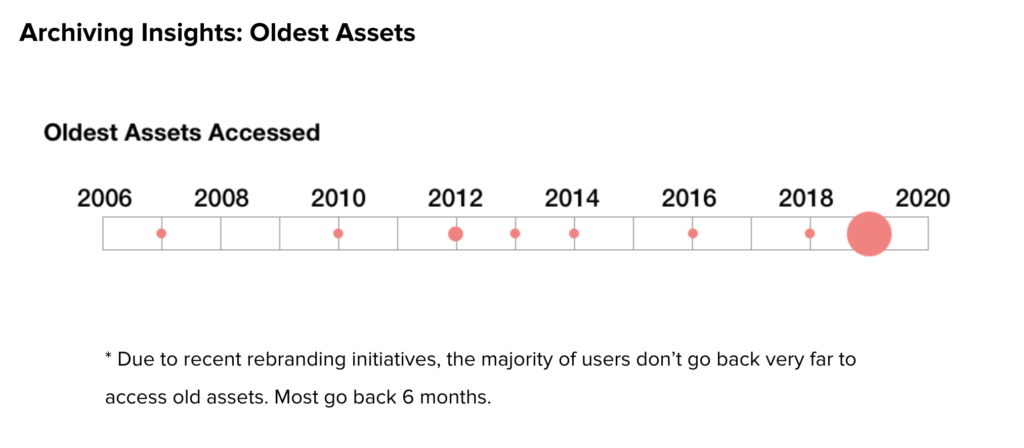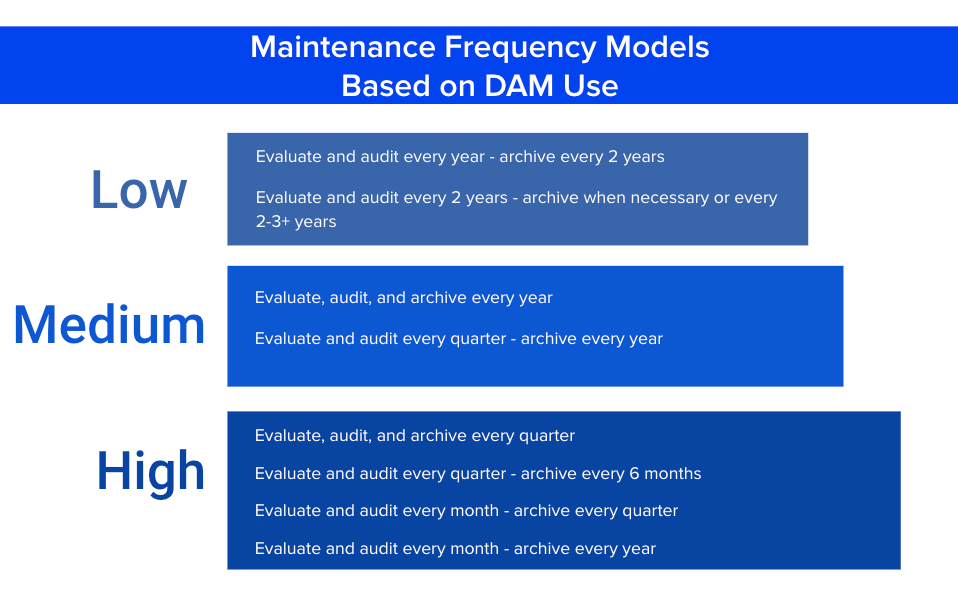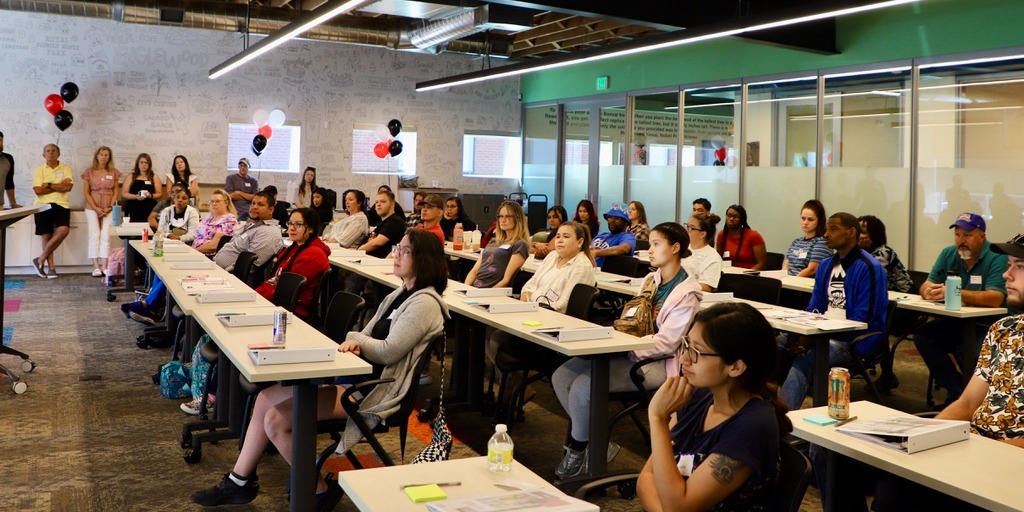If your enterprise Digital Asset Management (DAM) system is getting out of hand—whether it’s a storage issue, an organization issue, or a legacy content issue, an approach to maintenance and archiving is a necessary element of a complete DAM strategy.
When storage is low and the platform has tiered pricing for storage, buying more space might not be an option. Cleaning out the DAM shouldn’t be a mad rush to save money—by establishing scheduled maintenance, you’ll avoid potential pitfalls when it comes to hastily archiving assets to make room for new ones.
Maybe the issue isn’t storage, but rather volume: Are there just too many assets to sort through? Are there so many assets that search results aren’t narrow enough to find what you need fast? Does your organization have trouble determining the latest version of an asset, or is your DAM clogged with duplicates? Maybe it’s full of years and years of old content that is never used.
On a regular basis, the DAM needs to be audited and cleaned to ensure assets are being stored correctly, governance is being adhered to, and that the DAM is operating as intended. Especially for enterprise-level DAMs with lots of sources and users, regular maintenance is essential.
Why DAM Audits and Maintenance are Important
Well-designed strategies, processes, and workflows are the best way to maximize DAM efficiency and return on investment. According to GISTICS Research, without a DAM strategy:
- An average of $8,200 per person per year is spent on file management activities which include searching, verification, organization, backup and security;
- Creative professionals spend an average of 1 out of every 10 hours of their time on file management;
- The average creative person looks for a media file 83 times a week and fails to find it 35% of the time.
Finding the digital assets you need should be fast and simple—if it’s not, you may need to rethink your maintenance approach or consider a digital asset management strategy overhaul. Establishing a detailed maintenance and archiving strategy supports processes that keep the DAM current and helps to identify archivable assets such as duplicates, old versions, and content that isn’t useful.
During the audit process, assets should be assessed for various criteria and identified for archiving. Depending on the number of assets you have, this can seem like a tedious process, but that’s why choosing a DAM platform with robust features is essential. DAM automation features such as predictive search, AI tagging and grouping, and smart metadata will help you breeze through asset audits. Establishing guidelines for your evaluation criteria will also speed up the process of asset review. Assets meeting the archiving criteria should be backed up and removed from the DAM to keep the DAM clean and to enable space for new ones. Archiving outdated assets will also archive outdated ways of thinking.

Audit Considerations
When establishing an audit process, consider the governance, cadence, and criteria that will be used for the audit. Governance establishes who is responsible for the tasks, cadence determines how frequently the audit process will take place, and the criteria guides the evaluation process to accomplish the goal of the audit: identifying the assets to be archived.
Governance
While governance in digital asset management is broad, when it comes to maintenance specifically, a DAM governance plan boils down to task responsibility. Auditing and maintenance tasks are ideally performed by a DAM Manager, however, not every organization has a librarian or specific role overseeing the DAM. While DAM upkeep usually rests on the collective power users (to use it correctly and follow the strategy), checks and balances—such as the responsibility of performing scheduled audits and cleanup—should be assigned to a specific person. Choose someone with a vested interest in the success of the DAM who will be responsible for these maintenance processes.
Cadence
In addition to regular day-to-day asset management, assets in the DAM should be audited and assessed on a basis consistent with the amount of use it receives. For example, an organization with the need for constant new assets and/or an internal creative production team likely uses their DAM more often than one that contracts out their asset production a few times a year. Highly visual industries and brands that create tens of thousands of assets each year will need to perform these tasks more regularly.
In order to determine the cadence of the audit process, you’ll also need to understand how frequently older assets are used and the average age of usable assets. This will help you understand asset turnaround and the age at which assets stop being useful. Check to see if your DAM platform provides analytics on how often assets are accessed, the age of the most-used assets, and the age of the oldest used assets across a determined period of time. It’s important to check your other systems that store, utilize, or distribute assets; such as any CMS, CRM, or cloud storage solutions to also provide this data. If you don’t have access to analytics like these, you can gather insights via a survey to your DAM users—while it won’t be as accurate, it will give you a good ballpark to work with.
This is an example of the output of an asset age and use exploration for one of our clients:

For this example, assets were not used much past 6 months old. However, this particular client had to keep assets available for tax reasons for 7 years and 11 years for other legal/regulatory reasons. Therefore, a tiered approach worked best for them, with regular maintenance and evaluation occurring every six months, archiving assets older than 7 years each year, as well as keeping an 11-year backup in a separate cloud storage solution.

An organization that uses their DAM more often or stores a large amount of assets will need to perform more frequent audits than an organization that mainly does a batch migration a few times a year or uses the DAM mostly for reference. Audits may also be done off-cycle in cases of a rebrand, redesign, or DAM platform migration.
Establishing & Using Evaluation Criteria for DAM Auditing
Determining what criteria to evaluate your assets against is a crucial step in establishing a DAM maintenance strategy. The process should be structured so that it can be followed accurately and to ensure the audit is comprehensive. Evaluation criteria will be different for every organization based on their needs, but here are a few options for evaluation criteria when performing audits as part of a DAM maintenance and archiving strategy:
Expired – Any licensed assets outside of their designated license period, including anything that has a contract, legal agreement, license, digital rights, copyright, and/or any kind of end date. For example, stock imagery or agency creative.
Outdated – Any assets produced during a time period prior to what would be regularly used. Assets should also be evaluated for elements that are visually outdated. For example, dates or years visible within assets, fashion trends or hair styles, and technology like phones and computers. Any older brand elements that are no longer relevant.
Older than X years – Any assets older than X (a determined amount of time) years should be evaluated for usefulness/relevance.
Duplicative – Any copies or exact duplicates of assets or any older versions of assets that are not useful anymore. For example, duplicate assets that are not useful because of their size, dimensions, or ratio/crop; or duplicate assets that are lower quality.
Relevance – Any assets pertaining to topics, people, or places no longer affiliated with the organization or brand, or any assets that are no longer relevant because of their subject matter, context, or style.
Once the evaluation criteria and frequency are established, the digital asset management audit process can begin as scheduled. It’s useful to document the audit for future reference as well as to record the outcomes of each evaluation. The audit can be performed in whatever manner makes the most sense for the organization and based on the DAM and other related system(s) —by date uploaded, by topic or category, by asset type, by channel, etc. Efforts can be tracked and recorded in any efficient way that meets the organization’s needs, such as in a spreadsheet or other documentation method.
Validation & Archiving Process
Assets identified as archivable by the established criteria should then be validated using the following steps before being backed up (migrated to a separate storage solution) and hidden or deleted from the DAM. The validation process ensures that only truly archivable assets will be archived.
Part of this process may be automated by the DAM or other asset-containing system(s), but there are often additional manual steps to take in order to ensure an asset can and should be archived. Depending on asset ownership, stakeholders may also need to be consulted. Additional review and approval of asset archiving should be determined on a case-by-case basis.
1. Assess permissions: Check to see who has access to the asset currently. If your DAM has tiered permissions, check if the asset is set to only be viewable by admins or power users, or if it is viewable publicly, or by anyone with access to the DAM.
2. Contact the creator or stakeholder: This step may or may not be necessary depending on the organization’s governance model and structure, but the manual process of reaching out to the creator of the asset or its stakeholders to let them know that the asset met the criteria to be archived helps keep everyone in the loop and ensures potentially valuable assets aren’t being archived.
3. Assess use: Check to see if the asset is currently being used on any live channels. If there is metadata in your DAM that identifies where the asset is being used, utilize that value, or check via the systems, channels, and platforms themselves (this might be done in your CMS, CRM, or other system). Always confirm via the front-facing side of the channels (ex: live websites, apps, etc). Evaluate from there if it can be archived. Contacting the owner or stakeholder of a channel may also be necessary before taking further action.
4. Backup: Migrate the asset to a separate storage platform for backup. Check to see if the asset is already backed up via RAID drives and/or a cloud storage solution. Having a backup is important.
5. Remove: Hide or delete the asset from the DAM.
Backup Strategy
Digital asset management maintenance is important for the efficiency of the organization and overall DAM strategy, and part of that is having a backup strategy. When it comes to data backup there are two types of people: people who back up their data and people who haven’t lost all their data yet. Implement a two-tiered backup solution to prevent potential loss of data due to unexpected data corruption, loss, or other catastrophe.
Two-part backup is important to ensure proper data security—usually RAID drives and cloud backup. RAID drives ensure a protected, secure physical data backup. Having a cloud backup solution in addition is great not only for the extra protection should something happen to the drives, but also for extraneous edge cases like one-off requests for old assets. The purpose of backing up and storing archived assets outside of the DAM is mainly for peace of mind. Old assets are sometimes used for reference or for templating. Archived assets that don’t need to live in the DAM but still need to be accessed infrequently should live in cloud storage at the very least.
Benefits of a Complete Digital Asset Management Strategy
With a complete enterprise DAM strategy, you’ll ensure that your DAM is usable, saving people time and effort and reducing frustration.
Implement a Digital Asset Management Maintenance and Archiving Strategy to:
- Keep your DAM clean and manageable.
- Prevent duplicate content from taking up extra space.
- Make search easier and improve accuracy.
- Utilize the most up to date assets and focus on a single source of truth.
- Ensure the current branding is always used.
- Easily find the most useful and latest versions of assets.
Establishing these processes can be done any time, but most likely will concur with a platform migration, re-brand, or another change related to digital asset management. Let the Digital Strategy experts at Productive Edge help you with your Digital Asset Management strategy, whether you’re starting from scratch, merging disparate systems, or looking to upgrade platforms.
Contact us today to start a conversation.


.png)
.png)
